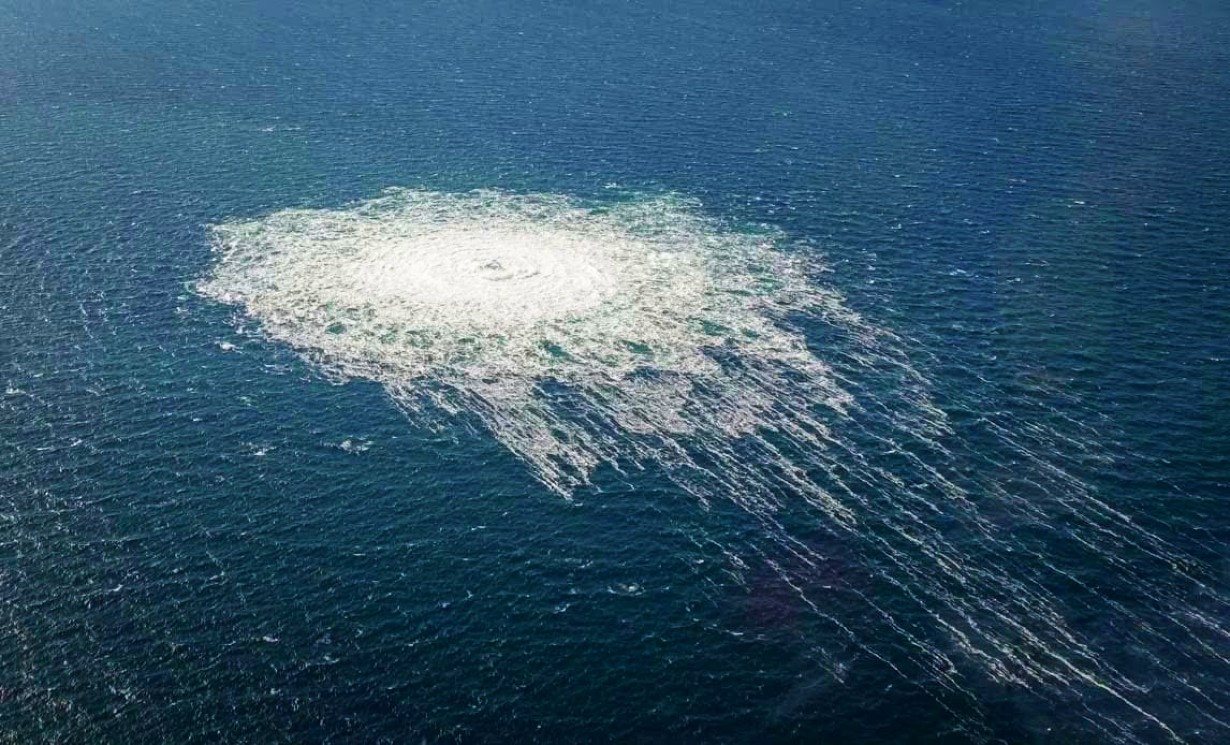An alternative theory has concluded a possible Russian hand behind September 26, 2022, Nord Stream gas pipeline attack, based on the Russian Navy’s exercise in the Baltic Sea a week before the explosion.
The drills involved naval special forces, combat swimmers, mini-submarines, tender ships with cranes to lift them, a smaller ‘spy’ vessel, and a communications ship.
The underwater pipelines on the sea bed are located northeast of the Danish island of Bornholm and are regularly patrolled by Swedish air assets. They closely track Russian naval movements, which were not particularly being watched at the time due to a host of operational and weather-related issues.
Their involvement, meanwhile, has been claimed on the basis of one of their Automatic Identification Systems (AIS) being switched off and other suspicious movements based on satellite imagery.
This is according to TOnline, a German online publication that perused Open Source Intelligence (OSINT) and satellite imagery of Russian naval maneuvers to draw these inferences.
Pipelines Start Pumping More Controversy
The Nord Stream matter came back into focus again on February 8 this year when Seymour Hersh, a Pulitzer Prize-winning journalist, alleged that US Navy deep-sea divers planted high-powered C4 explosives under the gas pipelines under cover of NATO naval exercises, BALTOPS in June 2022.
The Norwegian military then activated the explosives remotely upon receiving an order from the White House.
Prior to the Hersh report, Washington Post, on December 21, 2022, reported that there was “no evidence of a Russian hand in the explosions.” It added that European capitals, which blamed Moscow right off the blast, were finding themselves in an embarrassing position.
The German report outlines how ships and assets of Russia’s Baltic Sea Fleet – particularly the submarine support ship SS-750 carrying the mini-submarine Project 1855/AS-26 and the 313th Spetsnaz Special Forces unit – were the right combination needed for such an operation.

Russia Had The Right Combination For Explosion?
The SS-750 is usually stationed as part of the Baltic Fleet at the Kaliningrad base in Baltiysk. However, satellite images show that it apparently left port on the night of September 21.
At a speed of nine knots, she would have been able to reach the crime scene at 7:50 p.m. “The so-called Automatic Identification System (AIS), which sends location data, was switched off,” the TOnline report said.
The report suggests that what makes the Russian naval exercises even fishier is the addition of three more ships to the exercises, that includes the spy ship Syzran, the corvette Soobrazitelny, the frigate Yaroslav Mudry and another corvette Stoikiy.
Satellite images suggest Syzran left Kaliningrad – a Russian enclave outside the mainland in the Baltic region – on September 21. This, however, cannot be definitively said, owing to cloud cover that obscured surveillance. Soobrazitelny, according to the Russian Ministry of Defense (MoD), had been involved in anti-submarine warfare (ASW) since September 18.
As for the Yaroslav Mudry, official statements say it took part in the escort maneuver with the Soobrazitelny and its sister corvette, the Stoikiy. “Satellite images dated September 22 show a ship her size alongside one of the corvettes off the coast of Poland. Both had switched off the AIS,” the TOnline report said.
According to the report, the formation took advantage of the low visibility during dusk, the passing of a US naval flotilla several hours prior, and the canceled flight of a Swedish maritime patrol aircraft.
However, it is unclear whether these US Navy ships were part of a routine deployment or another exercise. The BALTOPS exercise had taken place three months prior, in June 2022. Hersh alleges Washington used these as a cover to plant explosives on the pipelines.
Findings Yet Not Caught in Official Narratives
The publication of the report has not yet found expression or mention in the official statements of the concerned nations so far. The open source publicly available information of the Russian Navy movements will have certainly been studied, particularly by the Swedish, German, French, and British governments immediately after the attack.
As of Friday, the Danish government rather invited Russian observers to help recover and study a mysterious object found near the pipeline. The Danish energy agency said it is “possible” that the object is a maritime smoke buoy, 16 inches tall and four inches wide, and that it “does not pose an immediate safety risk.”
The coordination with Moscow over investigating the attacks means countries are still not blaming it, despite maintaining a parallel hardline over Ukraine. Observers point out that Russia had little to gain from weaponizing the pipelines.
This is because the construction of Nord Stream 2 and the German participation was because of Moscow’s reassurances about the energy project being independent of geopolitical issues.
Since the war, some European countries (particularly the Baltic nations) have blamed Russia for deliberately stopping energy sales, while others remained neutral on purchasing gas from Moscow.
Russia, however, reasons that instances of stopping gas supplies are motivated by the sanctions on its energy sector, freezing of its Dollar assets, and consequently, the rejection of its demand to settle commercial and trade payments in Rubles.
- The author can be reached at satamp@gmail.com
- Follow EurAsian Times on Google News